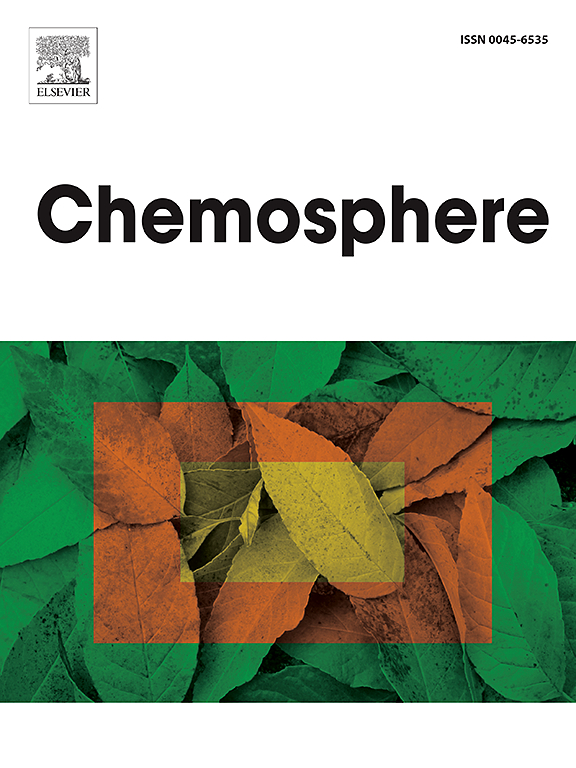The effect of free ammonia, free nitrous acid, dissolved oxygen and salinity on hypersaline nitritation stability
IF 8.1
2区 环境科学与生态学
Q1 ENVIRONMENTAL SCIENCES
引用次数: 0
Abstract
The prevalence of saline and hypersaline wastewaters from aquaculture and various industrial sources is increasing, often containing elevated levels of ammonia that require treatment prior to environmental discharge. In order to treat hypersaline wastewater using partial nitritation-anammox or other nitrogen removing processes involving nitritation, it is essential to develop and investigate an efficient, stable, and reliable hypersaline nitritation reactor. This study examines the stability of hypersaline (4 % salinity) nitritation by investigating the effect of free ammonia (FA), free nitrous acid (FNA), dissolved oxygen (DO) and high salinity on the inhibition of nitrite-oxidizing bacteria (NOB) in continuous and mixed fixed bed reactors. Long-term (202 days) stable nitritation was maintained under hypersaline conditions using high FA concentrations (1–10 mg N/L). At low FA levels (<1 mg N/L), the NOB Nitrospina proliferated and nitritation was lost under both high and low DO conditions. Using high FA, nitritation could be recovered even following repeated cycles of NOB proliferation. Under FNA concentrations of 0.11 mg N/L, the NOB Nitrococcus proliferated. Salinity alone above 5 % was shown to selectively inhibit NOB proliferation without significantly impacting nitritation performance. The dominant ammonia-oxidizing bacteria belonged to the species Nitrosococcus oceani and genus Nitrosomonas. Under non-saline conditions, similar reactors showed that only under high FNA (0.11 mg N/L) were NOB inhibited. These results provide valuable insights into the nitritation processes under hypersaline conditions, which have been less investigated compared to non-saline conditions.

游离氨、游离亚硝酸盐、溶解氧和盐度对高盐硝化稳定性的影响
来自水产养殖和各种工业来源的含盐和高盐废水越来越普遍,通常含有高浓度的氨,需要在向环境排放之前进行处理。为了利用部分硝化-厌氧氨氧化或其他涉及硝化的脱氮工艺处理高盐废水,必须开发和研究一种高效、稳定、可靠的高盐硝化反应器。本研究通过考察游离氨(FA)、游离亚硝酸盐(FNA)、溶解氧(DO)和高盐度对连续和混合固定床反应器中亚硝酸盐氧化菌(NOB)抑制作用的影响,考察了高盐(4%盐度)硝化的稳定性。在高盐条件下,使用高浓度FA (1-10 mg N/L)维持长期(202天)稳定的硝化作用。在低FA水平(1mg N/L)下,高DO和低DO条件下NOB硝化藻均增殖,硝化作用丧失。在高FA条件下,即使经过多次NOB增殖,硝化作用也能得到恢复。FNA浓度为0.11 mg N/L时,NOB硝化球菌增殖。5%以上的盐度可以选择性地抑制NOB的增殖,而不会显著影响硝化性能。优势氨氧化菌属为海洋亚硝基球菌和亚硝基单胞菌。在非盐水条件下,类似的反应器显示,只有在高FNA (0.11 mg N/L)条件下,NOB才被抑制。这些结果为高盐条件下的硝化过程提供了有价值的见解,与无盐条件相比,高盐条件下的硝化过程研究较少。
本文章由计算机程序翻译,如有差异,请以英文原文为准。
求助全文
约1分钟内获得全文
求助全文
来源期刊

Chemosphere
环境科学-环境科学
CiteScore
15.80
自引率
8.00%
发文量
4975
审稿时长
3.4 months
期刊介绍:
Chemosphere, being an international multidisciplinary journal, is dedicated to publishing original communications and review articles on chemicals in the environment. The scope covers a wide range of topics, including the identification, quantification, behavior, fate, toxicology, treatment, and remediation of chemicals in the bio-, hydro-, litho-, and atmosphere, ensuring the broad dissemination of research in this field.
 求助内容:
求助内容: 应助结果提醒方式:
应助结果提醒方式:


